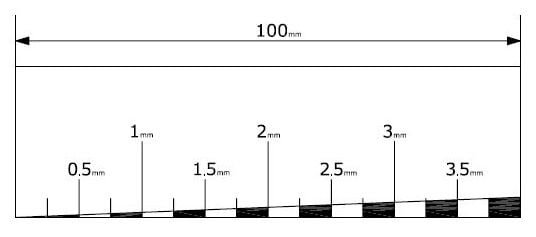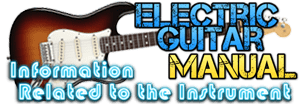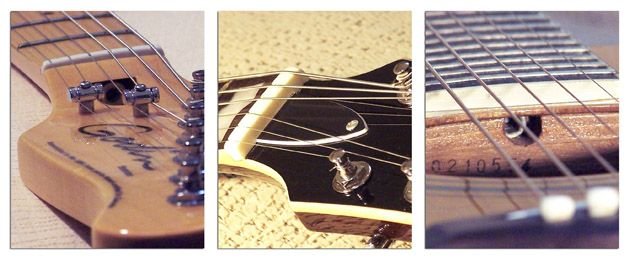Learn How to Adjust the Truss Rod of the Guitar Neck, and DOWNLOAD a FREE RULER to Measure the Height of Strings.
In the event that pressing a fret of the first three a buzzing sound, it is possible that the guitar lacks some neck curvature.
To correct this, we must Adjust the Truss Rod of the Guitar Neck, or the screw that is usually found just below the nut.
You can also find this screw, on the opposite side of the neck (image on the right), especially on acoustic and bass guitars. Although also in some electric guitar models.
The Truss Rod is responsible for counteracting the tension exerted by the guitar strings on the neck, either by excess or by default, or depending on the gauge of strings that our guitar mounts.

Although the neck cannot be completely straight, it must maintain a certain curvature to avoid fret buzz (in the images some exaggerated curvatures appear so that the concept is understood).

How to Adjust Guitar TRUSS ROD
To give the neck a little more curvature towards the strings, we will have to turn the screw counterclockwise. And to curve the neck in the opposite direction, we will have to turn the screw clockwise.
This would be normal, but although it is rare, there are some left-handed models that work just the other way around.
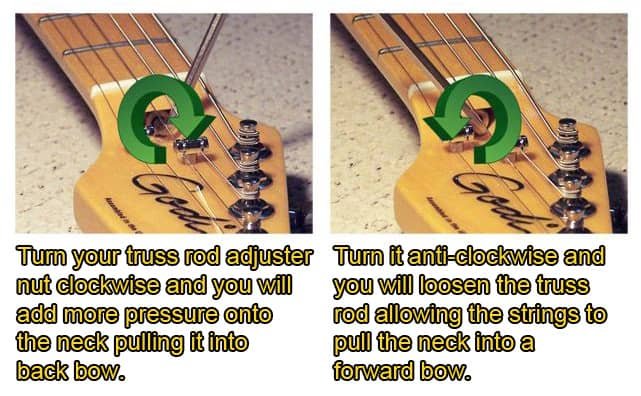
To Adjust the Truss Rod of the Guitar, we must loosen the strings first, adjustment the screw to the required side 1/4 turn, and tune again.
Then we will have to wait a few minutes to give the wood time to settle. If necessary, we adjust another quarter turn using the same procedure, without exceeding the successive adjustments, the complete turn of the screw or when it offers excessive resistance.
It is convenient to give the wood time to yield comfortably. Since a neck can continue to give slightly up to a couple of days after its adjustment. So it is better not to go crazy, and gradually adjust.
It is very interesting to write down the adjustments that we are making to the truss rod, to be able to reverse the steps, in the case of not being satisfied with the modifications, and thus to be able to leave everything as it was before making the adjustments.
If the problems persist after a full turn of the screw, or when the screw offers excessive resistance, my advice is to take the guitar to a luthier to have it checked.
How to Adjust Double Truss Rod
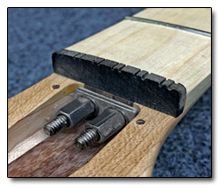
If your guitar model is one of those with Double Truss Rod, my advice is to take it to a luthier to adjust it. Since these models are more complex to adapt, but they have the advantage of being more stable to changes in humidity or temperature.
How to Measure Neck Relief on Guitar
We can check the state of the neck, placing a capo on the first fret, then we plucking the sixth string at the 16th fret and then we measure the gap that would remain between the 7th fret and the sixth string. This gap should be between 0.3 and 0.5mm. As you can see, it is a really minimal measure.

In the case of acoustic guitars, instead of pressing on the 16th fret, we would have to press on the fret that joins the soundboard of the instrument. Generally this fret would be number 14, and the measurements would be similar.
For measurements we can use a precision metal rule. Since these types of rules measure the distances from the tip, and are marked each half millimeters. We may also need a magnifying glass, if the view is not with us.
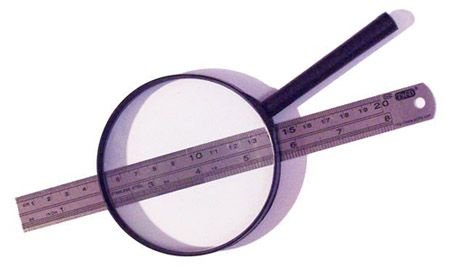
We can also print on thick paper or cardboard, this Home Rule to measure the height of the strings of our electric guitar.
Ruler to Measure Height of Guitar Strings
